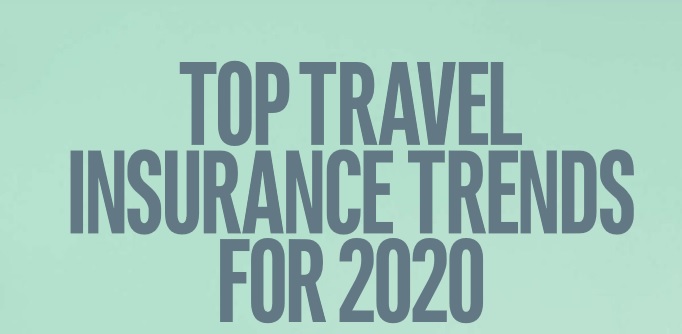By Rajeev Shrivastava
The travel insurance market is booming. A recent report by the United States Travel Insurance Association (USTiA) revealed that while Americans are now spending almost $4 billion annually on travel insurance, only 6% of that figure is for travel medical insurance. This represents a huge opportunity for life and health brokerages.
Grandparents, gamblers, getaways and the rise of “bleisure” family travel
- The newly-released USTiA study demonstrates that Americans lack sufficient education concerning the risk they take when venturing outside of the U.S. without sufficient travel medical insurance coverage.
- Three countries have taken a step toward mandatory travel insurance requirements for entering their countries—look for more of this in 2020.
- A new travel demographic has emerged—split generational travel—where grandparents and grandchildren ditch the middle and travel sans mom and dad.
- The rise of the “micro-cation” may drive the rise of annual policies for the travel medical insurance industry.
- 64% of travelers are taking or are considering taking their families on business trips, opening the door for multi-trip and multi-individual policies.
The travel insurance industry is obligated to educate U.S. travelers
The fact that only 6% of U.S. travelers secure travel medical insurance—which differs from trip insurance—illustrates the gamble Americans take when venturing overseas without travel medical insurance. There is a perception with the American traveler that their U.S.-based medical coverage will cover them while out-of-country and that the cancellation and delay coverage they purchase when completing their airfare purchase will cover them for everything else.
Nothing could be further from the truth.
Just as uninsured Americans can lose their home or find themselves declaring bankruptcy from lack of sufficient medical coverage in the states, Americans who travel overseas and sustain serious injury or illness are gambling with their financial security at home when venturing abroad without sufficient travel medical coverage. It is the responsibility of the travel insurance industry to educate and warn their customers that the level of risk is high when they travel abroad without an adequate travel medical insurance plan.
Multiple countries will make travel medical insurance coverage a condition for border entry in 2020
As global travel continues to rise, universal health care systems are threatened with insolvency from bearing the burden of emergency medical treatment incurred for foreign visitors. This year, three countries began the process of requiring all non-nationals to secure travel medical insurance before entering their country.
Thailand’s new retirement visa requirement
Thailand instituted requirements for travel medical insurance for all travelers over 50 coming to their country on what is known as the country’s ‘retirement visa.’ This age demarcation is when pre-existing conditions become more common. The Ministry of Public Health approved the measure and created three policy options that foreign visitors can purchase online from the Office of Tourism.
Travelers who do not secure a visa must purchase a plan at the airport at their time of arrival or they will be denied entry. The policy maximum requirement is 2 million Baht (THB), the equivalent of approximately $65,000 (USD), more than double the Schengen area visa requirement for travel to 26 of its European area countries.
Japan pushes travel insurance coverage as the 2020 Olympics near
Japan found that nearly 30% of international tourists come to their country without travel medical insurance and that one-fifth of hospitals in Japan have been hit with unpaid medical bills incurred by foreign travelers. This according to Japan’s Health, Labor and Welfare Ministry. This prompted a huge PR push by the Japanese tourism Industry to distribute flyers at tourist information centers in airports and hotels, and to distribute cards listing the most expensive hospital treatments.
Private travel insurers noticed an uptick in sales from foreigners following the initiative. Prefectures such as Okinawa have pushed tourists to purchase travel medical insurance onsite at convenient locations while enjoying their popular beaches and warm weather.
Look for the implementation of mandatory travel medical coverage in Japan as the country prepares to host the 2020 Summer Olympics in Tokyo.
A tiny country with a very busy port
The tiny island country of New Caledonia, a French Pacific Island territory, welcomes more than 1 million cruise passengers each year. The country found itself treating uninsured and ailing holiday travelers and cruise ships passengers this year and implemented a potential entry ban for travelers who cannot prove that they have sufficient travel medical insurance.
Several cruise lines that make over 500 stops each year to their port are ramping up awareness outreach to passengers regarding New Caledonia’s recent requirement to carry adequate medical insurance and repatriation coverage. Those who disembark without travel medical insurance will be required to state in writing that they will pay for any medical expenses they incur while on the island.
Look for more countries to initiate mandatory travel medical insurance requirements in 2020.
Watch for the rise of split-generational travel
Travel insurance providers have seen the rise of multi-generational travel for the last two decades, especially in the cruise industry where specialty policies have begun to surface. Now on the horizon comes ‘split generational’ travel where the kids get to leave mom and dad at home and travel with grandparents or other older relatives.
Children are more prone to illness and injury while traveling. Travelers aged 55+ are more likely to have diabetes, hypertension or heart conditions, all of which are considered pre-existing conditions. Comprehensive coverage for acute onset of pre-existing conditions is imperative for this age group.
Any family travel should be insured for special benefits including emergency reunion coverage, which allows for bedside visits from parents back home, and return of minor children for situations where the grandparents of a traveling child may become unable to care for them. Emergency medical evacuation is another critical benefit that families need to include with their policy which allows for air evacuation from land or sea should a critical injury or illness occur with one or more of the traveling party.
The rise of the “micro-cation” in vacation-starved America
Americans take less vacation time than any other developed nation in the world. This holds especially true for millennials and Gen Z now entering the workforce. Both demographics are typically strapped with student loan debt but rank global, experiential travel as one of their top expenditures over buying a home or having a car.
Many of these young workers have a fear of taking too much time off work at once, hence the emergence of “micro-cations.” These allow employees to carve out long weekends over national holidays or simply use smaller chunks of their paid time off more frequently to allow them to take three- to five-day vacations wrapped around a weekend.
Destinations such as Iceland or Costa Rica offer cheap airfare and enough of an escape from the ordinary to provide desperately needed life-work balance. Enduring red-eye and other sleepless flights in foreign time zones is seen as a minimal sacrifice to escape the pressures of work. This demographic segment is poised to take over the travel market after baby boomers and Gen X.
But, this does not mean that “micro-cation” travelers are less at risk than those of Americans venturing out on longer vacations. Regardless of the length of a trip, comprehensive travel medical insurance and trip insurance coverage are critical for the traveler to secure.
Many popular credit cards may provide adequate coverage for trip delays or cancellations, but all U.S. travelers venturing out of the country need travel medical insurance coverage. This is especially true for those engaging in hazardous or adventure sports which require specialized policy riders. These can add between 4 to 10% in additional cost to a policy depending on age and the length of travel.
CALL OUT BOX:
- 57% of Americans took vacations lasting fewer than five days in 2018
- 25% of Americans took three “micro-cations” in 2018
- 28% of Americans did not take a leisure trip in 2018
Source: Ipsos poll, 2018
More business travelers want to take their families with them
Thomas Cook released its yearly travel trends report in September which showed that 64% of travelers are taking or are considering taking their families on business trips, opening the door to sales of multi-trip and multi-individual policies.
The business travel insurance market has seen the rise of bleisure travel for the last two decades—travel that wraps leisure time around a business trip—but more and more business travelers want to bring their families, especially with the continued rise of working mothers occupying more senior and executive positions that require travel.
CALL OUT BOX:
- 75% of business travelers extend their trips for leisure purposes, many do so multiple times per year
- 72% of business travelers are joined by another person, typically their spouse
- Business travelers who have family or friends joining them is on the rise, now at 56%
- The opportunity for quarterly and yearly travel insurance policy sales to cover visiting spouses or family is a great opportunity for life and health brokerages that sell travel medical insurance
Source: Hotel Business, March 2019
Cancel for work reasons vs. cancel for any reason policy coverage
Business travelers who rely on the travel insurance policy provided by their employer are familiar with the benefit of “cancel for work reasons,” which allows them to cancel travel for valid work reasons and recoup a portion of prepaid expenses. However, if an employee is putting family and leisure travel into the mix, they would need separate coverage for both themselves and their family to cancel a trip due to a natural disaster, political unrest, or for any other reason.
For the bleisure traveler who wants the ability to recoup up to 70% of prepaid expenses should an incident occur up to 48 hours prior to departure, they would need to purchase “cancel for any reason” (CFAR) policy coverage. This pricey policy option is growing in popularity as travelers fear unforeseen events or weather impacting their travel.
2020 will be a benchmark year for the travel insurance industry
2019 ends with at least three countries requiring travel medical insurance, including Japan, the country hosting the 2020 Summer Olympics in Tokyo. The uncertainty surrounding Brexit is foreshadowing the upcoming European Travel Information and Authorization System (ETIAS) visa which will be required for Americans who travel to Europe beginning in 2021.
The upcoming ETIAS visa requirement in 2021 offers yet another opportunity for travel insurance providers to offer protection for border entry denial in their policies. This is just one of the many sales opportunities on the horizon for 2020 as global travel becomes more regulated due to strained national health care systems and the implementation of new visa requirements.
 Rajeev Shrivastava is the founder and CEO of the global InsurTech company VisitorsCoverage Inc, a popular online travel insurance marketplace that allows travelers to acquire and manage their travel insurance online. He has also founded several online technology brands including TMQuotes.com, an innovative technology platform that empowers insurance agents or brokers to sell travel insurance online.
Rajeev Shrivastava is the founder and CEO of the global InsurTech company VisitorsCoverage Inc, a popular online travel insurance marketplace that allows travelers to acquire and manage their travel insurance online. He has also founded several online technology brands including TMQuotes.com, an innovative technology platform that empowers insurance agents or brokers to sell travel insurance online.

